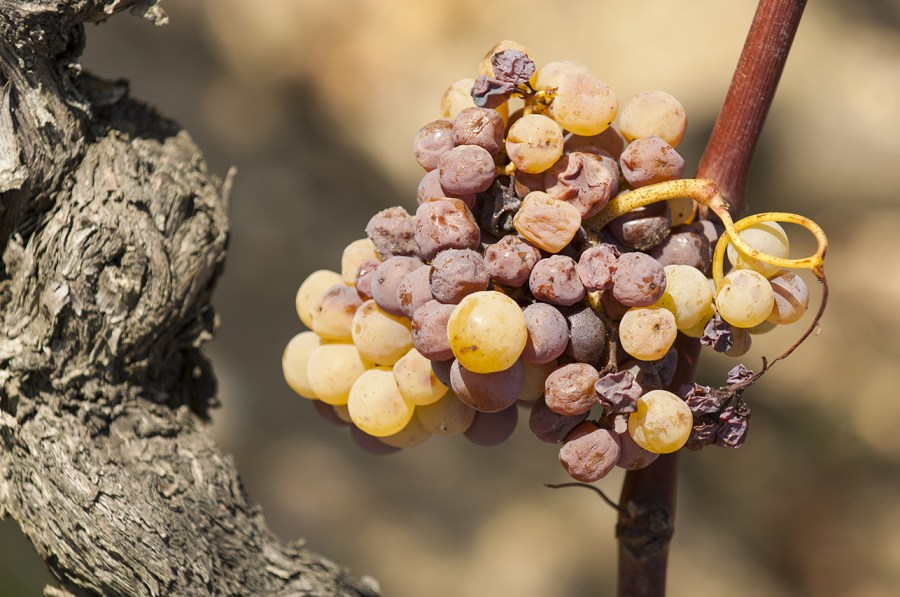Good canopy management and a targeted fungicide programme are vital to reduce mildew and Botrytis risks over the next few weeks, as Hutchinsons’ Rob Saunders and Chris Cooper explain.
With flowering well underway this is the time to prevent infections from settling in and spoiling the harvest.
Although there are frost affected blind buds on many cordons, on most sites there are enough healthy, large primary bunches (and on some cultivars good second bunches) to give growers a reason to be optimistic for another good harvest, provided grapes are clean from disease and pests.
This year Thrip numbers have been low so treatment is generally not required, although Light Brown Apple Moth numbers have been increasing and your local trap catches will dictate if an intervention is required; we are available to help with the decision if you are not sure.
Dense leaf canopies and soft fresh growth during summer months can provide an ideal environment for mildew and Botrytis to take hold given the right conditions, but preventative action should keep growers one step ahead.
Key to this is controlling foliage to maximise the “solar panel” effects of the leaves for optimum light interception, allowing the bunches to be exposed for spray penetration and air movement, and allowing a decent amount of UV light exposure to help control Powdery mildew.
There should be no more than three leaf layers in the canopy and generally growers stand to lose more from poor disease control than they do from increasing the potential sunburn risk to developing bunches.
Saying that, sunburn can be an issue in some cultivars, especially Bacchus. A compromise approach is to de-leaf on the side that gets the morning sun, and retain more foliage on the side exposed to intense afternoon sunlight, to provide some dappled shade.
Flowers provide a key entry point for Botrytis infection, and if wet over flowering a “chicks & hens” fruit set can result. Risk of this can be partially reduced by encouraging pollination, for example, by feeding to avoid the risk of boron deficiency (which leads to weak pollen tube growth); adding biostimulants such as Vineous Pro-Flowering or Kelpak; and finally, consider using mechanical methods to dislodge the caps such as increasing fan speeds.
Depending on conditions over flowering growers can opt for the soft approach starting with the use of elicitor products such as Fytosave and Romeo for mildew and Botrytis control, integrated with a good quality phosphite, such as Phorce for Downy mildew inhibition and Botector for Botrytis control. Under harsher conditions, a more robust approach would be appropriate, deploying materials like Stroby (kresoxim-methyl) for added Phomopsis control and its leaf greening effect. If Powdery mildew is established, use Bicarbonate (the Commodity substance approval currently expires at the end of August).
If it is very wet during flowering Botrytis is best controlled with a robust, three-spray strategy beginning at early flowering, then mid-flowering and a final spray at petal fall.
We know Downy mildew can take hold very quickly given suitable conditions, sometimes spreading up the vine from an initial infection that began where basal shoot growth was not properly controlled, allowing overwintered inoculum to splash onto the vine from the soil.
Downy mildew is particularly challenging to control given the limited chemistry available and presence of metalaxyl resistance, so growers need to set out their strategy in consultation with their advisor early on or the options rapidly disappear.
As mentioned, good spray coverage is vital for effective disease control, so remember to use an appropriate water volume for the product and sprayer you are using. For many products this means at least 300 L/ha, although may be up to 600 L/ha, but check label recommendations and talk to your agronomist.




